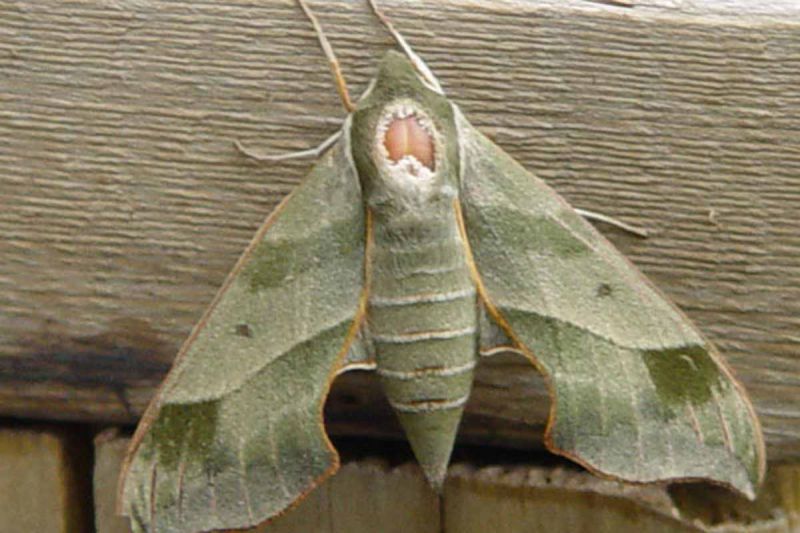Aug 07, 2014
This column is about an interesting but obscure natural phenomena that we often see in our lakes in summertime. A couple of summers ago, some visitors to our area saw what was described as a “globulous gelatinous mass” in Sharbot Lake, and I was asked if I could shed any light on what it might be. I had seen a number of these “blobs” in Bobs Lake in the past, and my curiosity had led me to do a little investigation to find out more about them. As a result, I had a pretty good idea that this was another example of what I had seen.
I am referring to greenish, roughly softball-sized masses that on first glance resemble a quantity of what could be fish or frog’s eggs. Often formed around submerged sticks or plant stems, they tend to be found in warm, shallow, still water bodies, a few inches below the surface of the water. They appear to be mostly made up of a translucent jelly-like substance, but divided into a large number of similar sized “cells” or individual units, not unlike the cells of a honeycomb. Each cell seems to have a darker spot in the centre.
It turns out that these blobs are actually colonies of small invertebrate aquatic animals called bryozoans – more specifically a colonial freshwater bryozoan called a Phylactolaemata. A good way to think of these animals is as a group of identical jellyfish-like creatures that all live together in a single blob-like structure. Bryozoans come from one of the most obscure corners of the animal world, and aren't closely related to anything else. Some people also describe them as like the small animals that make up corals (called “polyps”) but without the hard calcite structures that coral polyps create for themselves. Bryozoans filter-feed by means of a "crown" of tentacle-like appendages that extend out into the water to trap food.
The life cycle of these creatures appears to be quite complex. Each individual member of the colony is called a “zooid”, all of which are clones of the founding member of the colony. The colonies reproduce sexually, with each member functioning as both male and female at the same time – making them what is known as simultaneous hermaphrodites. They also reproduce asexually in a way that enables a colony to survive the variable and uncertain conditions of freshwater environments. Throughout summer and autumn they produce tiny disc-shaped bodies called statoblasts – groups of cells contained in shell-like structures that function as "survival pods". Statoblasts can remain dormant for considerable periods, and while dormant, can survive harsh conditions such as freezing and drying out. They can be transported across long distances by animals, floating vegetation, currents and winds. When conditions improve, the shells open and the cells inside develop into a zooid that tries to form a new colony. A study estimated that one small group of colonies produced 800,000 statoblasts. Fortunately for us, not all statoblasts become new colonies, or our lakes would have little room for anything other than bryozoans!
One last interesting feature of these curious creatures is worthy of note: They don’t appear to have a common name other than “freshwater bryozoans”. This strikes me as an opportunity for some creative naming. If anybody would like to submit a suitable name for these curious creatures, we could look at publishing it in the next column. Who knows, the name may even stick! Photo: "Bryozoa" by Braunchitis - Own work. Licensed under Creative Commons Attribution-Share Alike 3.0
Observations: We collected this harvest of Chanterelles a few weeks ago. It seems to be a good year for them, perhaps because of the long winter, moist spring, and cool and dryish July. I saw chanterelles in a Kingston grocery store selling for $30/pound! Readers are reminded to never eat or even collect any mushrooms that they cannot 100% identify as safe.
Lorraine Julien noticed that the June 2014 issue of Canadian Geographic has an article on the Showy Lady’s Slipper orchids at Purdon Conservation area. Gina Wicher sent this photo of type of sphinx moth called a Virginia Creeper Sphinx Moth (Darapsa myron). It eats Virginia creeper and wild grape.
Send your observations to Lorraine Julien at This email address is being protected from spambots. You need JavaScript enabled to view it. or Steve Blight at This email address is being protected from spambots. You need JavaScript enabled to view it. (please note that this is a new email address for Steve Blight)
Mike from the Plevna area sent this photo of giant plants growing on Smith Road. The tallest one is a whopping 11ft. 3in. and one of the lower leaves is 24” long. There are a number of wild lettuces (Lactuca species) in our area, several of which are native and can grow quite tall with the right conditions -- moisture, good light, lack of competition, etc. White flowers would indicate tall blue lettuce (Lactuca biennis), and yellow flowers with no prickles would suggest Canada lettuce (Lactuca canadensis). These prickles on the mid rib of the underside of the leaves suggest that these are prickly lettuce (Lactuca serriola), which normally grows about 5 feet tall, but a more positive identification can be made once the plants flower.
More Stories
- Harrowsmith Public School and the Magic of Theatre
- You’re a Good Man Charlie Brown – a school wide effort at SHS
- Leadership From Within
- New Bulk Water Station in Sydenham
- Frontenac County Council looks at Healthcare Recruitment
- Good Turn Out Maple Fest Despite Rain
- Future looking brighter for Denbigh Fire Department says Chief
- Local Favourites featured at 2nd Annual SF Music Festival
- Perth Festival of the Maples, Saturday, April 27
- South Frontenac Council

